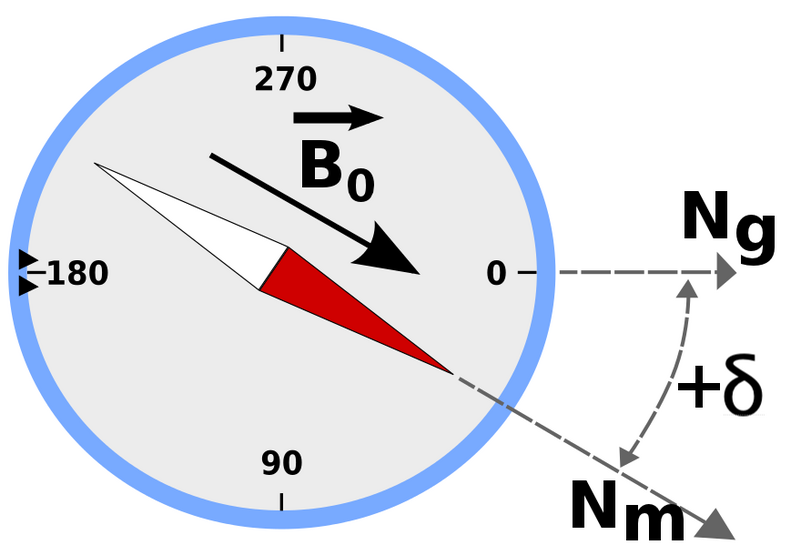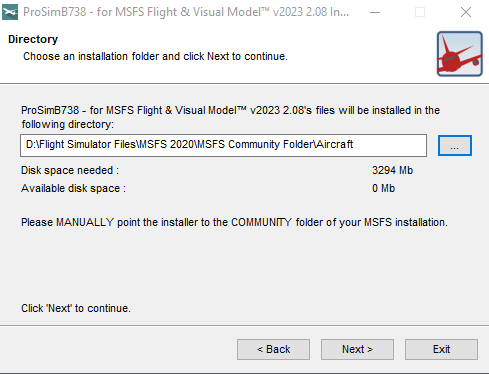Often you need to inject into the flight plan a Place Bearing Waypoint or an Along Track Waypoint. There are several ways to do this with each method being similar, but used in differing circumstances. Depending upon the FMC software in use, either the LEGS or the FIX page is used.
A Place Bearing Waypoint (PBW) is a waypoint along a defined bearing (radial) that is created at a specified distance from a known waypoint or navigation aid (navaid). A PBW is used to create a waypoint that is not in the active route.
An Along Track Waypoint (ATW) is a waypoint inserted into a route that falls either before or after a known waypoint or navaid.
Although the PBW and ATW are similar, they are used in differing circumstances.
Creating a Place Bearing Waypoint
Type into the scratchpad the waypoint name, bearing and distance.
For example, type into the scratchpad a TETRA340/10. TETRA is the waypoint that we want to create the new waypoint from. This is called an anchor waypoint. 340 is the bearing in degrees from the anchor waypoint that the new waypoint will be generated. 10 is the distance in nautical miles from the anchor waypoint that the waypoint will be generated at.
Up-select TETRA340/10 to the LEGS page.
Press EXECUTE.
To insert the waypoint before the anchor waypoint use the negative key (TETRA340/-10). Do not use the negative symbol if you want to insert the waypoint after the anchor waypoint (TETRA340/10). Take note that the slash (/) is after the bearing and the waypoint name and vector are joined with no spaces.
Creating an Along Track Waypoint
Type into the scratchpad the waypoint or navaid that will be used as an anchor waypoint.
Up-select this into the correct line of the route in the LEGS page.
Press EXECUTE.
Important Points:
If the waypoint is already part of the route, it is not necessary to type the identifier in to the scratchpad. Rather, press the appropriate Line Select Key adjacent to the identifier (in the LEGS page) to down select to the scratchpad. Then add the /-10 or /20 after the identifier and up-select. Using this method eliminates the possibility of typing the incorrect identifier into the scratchpad.
The FMC software will generate subsequent waypoints with a generic name and numerical sequence identifier. For example, TETRA, TETRA01, TETRA02, TETRA03.
Creating a Circle around a Waypoint using the FIX Functionality
The purpose of creating a circle (ring) around a point in space is to increase spatial awareness when looking at the Navigation Display (ND). A circle at a set distance may be used to define the Missed Approach Altitude (MAA), the distance from the runway threshold that the landing gear should be lowered, or to designate an important waypoint.
I nearly always use two or three circles depending upon the approach being executed. One circle will be at 12 miles while the second circle will be at 7 miles. The use of circles can be very helpful when flying a circle-to-land approach; one circle will define the MAA and the other circle will define the 'protected area' surrounding an airport.
To create a circle (ring) around a known point
Press FIX on the CDU to open the FIX page.
Type into the scratchpad, the name of the waypoint or navigation aid (VOR, NDB, etc). For example TETRA.
Up-select this to the FIX page (LSK1L).
This will display a small circle around the identifier in the Navigation Display in green-dashed lines.
If you want the circle to be at a specific distance from the point in question.
Type into the scratchpad the distance you require the circle to be drawn around the waypoint. For example /5.
Up-select this to the FIX page (LSL2L).
To add additional circles around the selected point, repeat the process using different distances and up-select to the next line in the FIX page.
Important Point:
Creating a Single Along Track Waypoint (at the edge of the circle)
One or more waypoints can be created anywhere along the circumference of the circle (discussed earlier) by inserting a bearing and distance into the FMC page.
To create a waypoint at the edge of the circle
Create a circle around a point as discussed earlier (TETRA).
Type in the scratchpad the bearing and distance that you wish the new waypoint to be created (for example 145/5).
Up-select this information to the FIX page (LSK2L). This will place a green-coloured line on the 145 degree radial from the waypoint (TETRA) that intersects a circle at 5 miles on the ND.
Next, select the 145/5 entry from the FIX page (press LSK2L). This will copy the information to the scratchpad. Note the custom-generated name – TETRA145/5.
Open the LEGS page and up-select the copied information to the route. Note that TETRA145/5 will now have an amended name – TET01.
Copy TET01 to the scratchpad.
Open a new FIX page (there are 6 FIX pages that can be used). Up-select TET01 to the FIX page (LKL1L). This will create a small circle around TET01 on the ND.
To remove the waypoint (TET01) from the route (if desired), open the LEGS page and delete the entry. If desired, the waypoint can easily be added again to the route from the FIX page.
The above appears very convoluted, however once practiced a few times it becomes straightforward. There is a less convoluted way to do this, however, the method is not supported by ProSim737.
Inserting an Additional Along Track Waypoint around the Arc of the Circle (DME Arc)
A DME arc is a series of Along Track Waypoints that have been created along an arc at a set distance from the runway (waypoint or navigation fix). This is often used when flying a NDB Approach.
Usually, the arc begins on the same bearing as the navigation track of the aircraft, and ends a set point, usually at the turn from base to final. Subsequent bearings after the initial bearing are at a 30 degree spacing.
To create a DME Arc
First, ensure you have a circle created around the waypoint (TETRA) at the distance required (FIX page).
Select the anchor waypoint (TETRA) for the arc from the LEGS page and down select it to the scratchpad.
Type into scratchpad after TETRA (as separate entries) the bearing and distance. For example: TETRA200/5, TETRA230/5, TETRA260/5, TETRA290/5 TETRA320/5 and so forth. Note the bearings differ by 30 degrees. This creates the arc.
Up-select each of the above entries to the route in the LEGS page (after the anchor waypoint TETRA).
This will create an arc 5 miles from TETRA.
If you want the first waypoint to be along your navigation track, use the bearing for this initial waypoint as indicated in the LEGS page of the CDU.
The FIX page can also be used to create an arc using the same technique. Using the FIX page will enable the arc to be seen on the ND, but not form part of the route.
Important Point:
Understanding the CDU
What I have described above is but a very brief and basic overview of some functions that are easily performed by the CDU.
CDU operation can appear to be a complicated and convoluted procedure to the uninitiated. However, with a little trail and error you will soon discover a multitude of uses. It is important to remember, that there are often several ways to achieve the same outcome, and available procedures depend on which FMC software is in use.
I am not a professional writer, and documenting CDU procedures that is easily understood is challenging. If this information interests you, I strongly recommend you purchase the FMC Guide written by Bill Bulfer. Failing this, navigate to the video section of this website to view FMC tutorials.














































